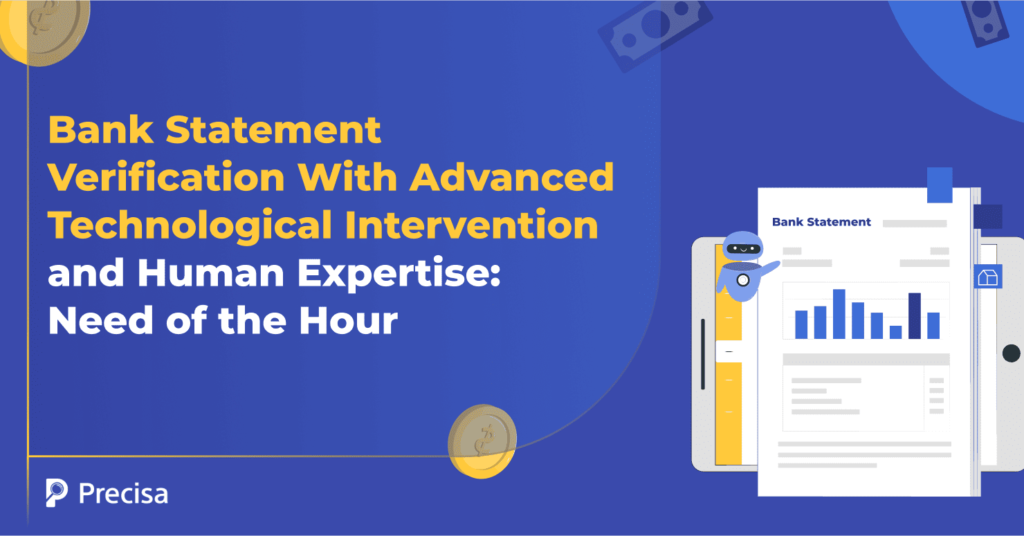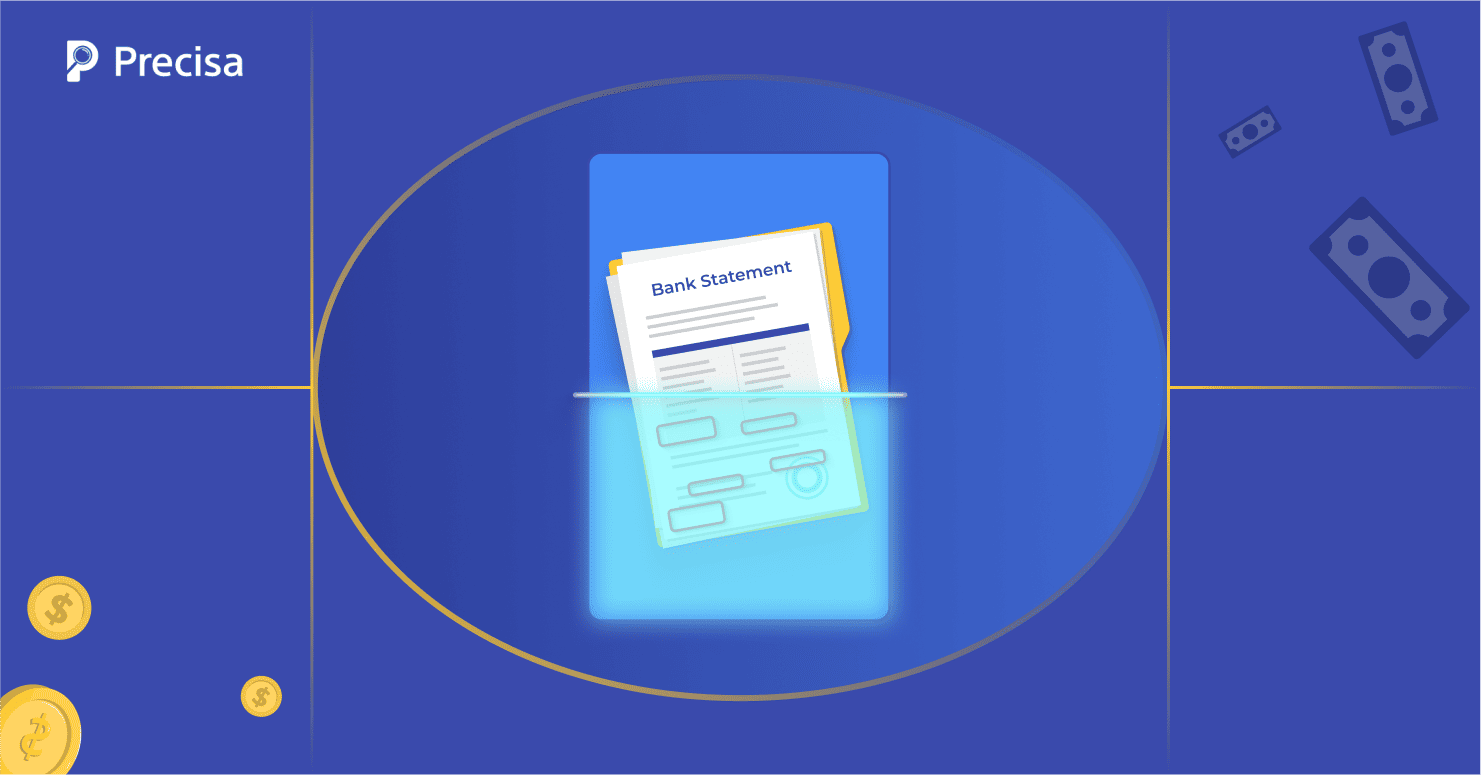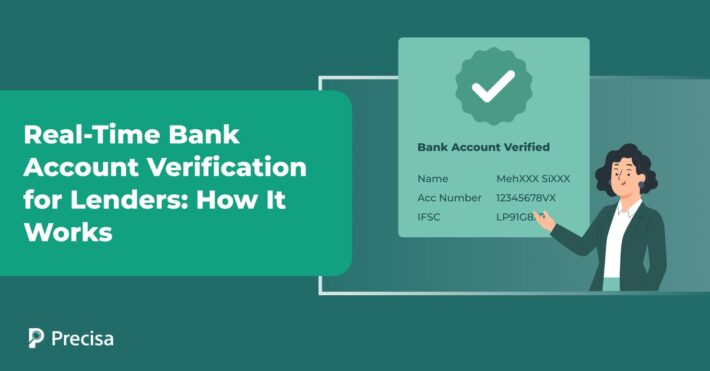Why Bank Statement Verification Fails in Digital Lending

Although technological advancements have revolutionised and streamlined bank statement verification, a few problems persist – fake or tampered bank statements. Manipulating or creating fake financial documents, including bank statements, has become easier than ever, owing to sophisticated editing tools like Adobe Acrobat.
Today, around 5% of all financial documents submitted through online channels are tampered with or manipulated. The loan write-off rate is as high as 60% for applications made using fraudulent or tampered documents, a staggering loss directly linked to verification failures.
The evidence is clear: human involvement in verification processes is creating critical vulnerabilities that result in massive lending losses. Here’s how human limitations are undermining digital lending accuracy.
Bank Statement Verification in Digital Lending: Areas Where Humans Are Involved
Bank statement verification is a key process that validates the authenticity and credibility of the data mentioned in the bank statement. This step is vital to verify whether all the transactions mentioned in the statements are consistent and tally with other financial records.
This section explores some key areas where lenders leverage human capabilities to uncover fraud and prevent regulatory violations.
Verifying the Source
It is essential to understand that bank statements should never be taken at face value. The human resources in the verification team must contact the issuing financial entity to verify the legitimacy of the statements.
Even then, it is important to get in touch with the bank on the contact details mentioned on their official website only.
Inspecting Security Features
In their effort to minimise fraud, most banks include an array of security features in bank statements that are hard to replicate.
The verification team must closely look for different elements, including holograms, watermarks, microprinting, layout designs, and fonts. Any discrepancies in any of the aforementioned elements are red flags.
Let’s take a look at a few other red flags that can be detected by humans without technological intervention.
Bank Statement Verification: Red Flags Humans Must Detect
While automated statement verification plays a key role in analysing bank statements in bulk, humans can still do their bit to spot red flags and identify the telltale signs of an illegitimate bank statement.
Inconsistent Font Types and Sizes
Fraudsters go above and beyond to ensure they get all the details right, including font sizes and types. They typically tend to copy and paste different sections from multiple sources to create a “legitimate” bank statement, resulting in mismatched fonts and font sizes.
Humans should be able to detect any inconsistencies in font sizes and typefaces in case the document is manipulated. However, this can easily slide under the rug since it is impossible to go through each document, resulting in errors during the verification process.
Statements With a Lot of Round Numbers
If a bank statement has multiple transactions with round numbers, it is a red flag.
For example, if the bank statement is dominated by transactions with round numbers like ₹2,000, ₹3,000, ₹5,000, and so on. There is a high chance these numbers were manipulated to ensure they are more convincing.
Incorrect Totals and Typos
Banks, especially the most established financial institutions, do not make typos or spelling mistakes.
However, fraudsters often use incorrect spellings, punctuation, and formatting – all details that should easily give away that the bank statements aren’t legitimate. Further, it is also essential to check whether the sum of all transactions in the credit and debit columns is accurate.
Once detected, these red flags serve as sufficient evidence to distinguish tampered and illegitimate bank statements. However, these discrepancies can often go unnoticed, particularly by humans, resulting in errors during bank statement verification.
How Can Automated Bank Statement Verification Help?
The arrival of sophisticated and cutting-edge bank statement analysers plays a key role in minimising the chances of inaccurate statement verification. Although manual techniques help, it is impossible to identify these errors while verifying thousands of applications.
Here’s how lenders can leverage AI to automate bank statement verification and detect the aforementioned red flags at scale.
Optical Character Recognition (OCR) for Bank Statement Verification
In the current financial landscape, lenders cannot afford to take multiple weeks to verify and approve loan applications.
Therefore, there is no room for manual sifting and verification anymore, and this is where OCR technology can help extract valuable data and text from bank statements within seconds.
OCR technology also ensures that the formatting is consistent throughout all the statements, eliminating the chances of human error in transcription.
EXIF Data Analysis
Metadata analysis is crucial to identify whether a document has been tampered with. Exchangeable Image File Format (EXIF) data analysis driven by AI can help lenders uncover whether editing software was used, whether timestamps were altered, and whether the documents were forged.
Intelligent Document Processing (IDP)
Although OCR and EXIF data analysis provide precious insights to identify anomalies, Intelligent Document Processing (IDP) helps lenders detect unusual spending and transaction patterns.
Key Takeaway
Bank statement verification is evolving rapidly, moving away from manual, time-consuming, and error-prone human-based verification toward fully automated and accurate AI-driven systems. Modern technologies including OCR, IDP, and EXIF analysis eliminate human error while providing the speed and consistency required for effective fraud detection at scale.
The future of statement verification lies in reducing human touchpoints and leveraging AI models that can detect even minor document manipulations without the inconsistency and fatigue that plague human verification processes.
Precisa offers one of the most advanced bank statement analysers that can seamlessly support bank statements from over 450 banks in 1000+ formats, making it a top choice for bank statement verification.
Additionally, the cutting-edge tool can automatically extract key data, bifurcate transactions, and detect anomalies, helping lenders make informed lending decisions.
Contact us today for a free demo to transform how you analyse bank statements.




